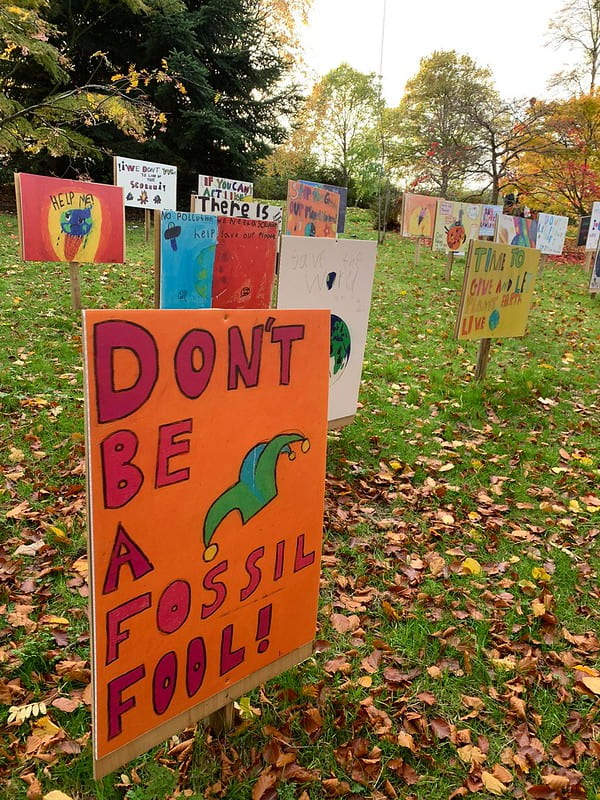The end of 2021 brought a flurry of activity on climate change. We had COP26, New Zealand’s international emissions reduction promise, a consultation on our national emissions reduction plan, and a commitment to provide more climate aid to developing countries.
With 2022 being a crucial year for climate action, we thought we’d take a moment to reflect on COP26 and how outcomes there relate to our national efforts to combat climate change.
Remind me again – what’s COP?
COP stands for ‘Conference of the Parties’, a global meeting on climate change that’s held every year. At COP in 2015, countries agreed to keep global temperatures well below 2˚C above pre-industrial levels, but ideally aiming for 1.5˚C – this is known as the Paris Agreement.
What was the point of COP26?
With global temperatures already 1.1˚C above pre-industrial levels and current climate policies not enough to prevent an overshoot of the 2˚C target, COP26 was regarded as the most important COP since 2015. COP26, held in Glasgow in the first weeks of November 2021, provided an opportunity for countries to assess their performance against the Paris Agreement and work out how to keep the 1.5˚C goal alive. See our office’s thoughts ahead of COP26 here.
So, how did it go?
COP26 ended with countries signing up to the Glasgow Climate Pact, which contained some meaningful outcomes related to mitigation, adaptation, and climate finance. COP26 kept the 1.5˚C goal alive, but COP President Alok Sharma concluded that “it will only survive if we keep our promises and translate commitments into rapid action.”
Before COP26 started, countries submitted updated 2030 climate mitigation goals, known as Nationally Determined Contributions, or NDCs. While longer-term mitigation promises are more ambitious, potentially containing warming to 1.8˚C, promised action for the current decade falls short of what is needed to keep the world on track to achieving the Paris Agreement. As for our own NDC, while our updated target is more ambitious than the original NDC submitted in 2015, we will depend on offshore offsets to achieve it, which the Climate Change Commission has described as “purchasing offshore mitigation, rather than [doing] what was necessary to achieve actual emissions reductions at source.” The Glasgow Climate Pact called on countries to “revisit and strengthen” their NDCs by the end of 2022 and report annually on progress, stressing the need to take urgent action to combat climate change in this “critical decade.”
Also on the mitigation front was an agreement to focus on “accelerating efforts towards the phasedown of coal power and phase-out of inefficient fossil fuel subsidies.” While the language could have been stronger, this section of the Glasgow Climate Pact, if honoured, will go a long way to supporting the world’s move away from some of the dirtiest fossil fuels.
With the effects of climate change already playing out, adaptation was on the agenda at COP26. Developed countries were urged to double their collective provision of annual adaptation funding to developing countries to US$40 billion by 2025. This acknowledges that developing countries are responsible for far less historic emissions than developed countries and yet are bearing the brunt of the effects of climate change.
On climate finance more generally, it was noted that developed countries have fallen short of their goal to provide US$100 billion in annual climate financing for mitigation and adaptation to developing countries. The Glasgow Climate Pact called for developed countries to deliver on this goal, as well as working to set a new goal for climate finance mobilisation. Excitingly, New Zealand has committed to providing more climate finance to developing countries in the Pacific and beyond – it’s important for us to play our part.
What else happened at COP26?
The Glasgow Climate Pact contained a couple of other exciting aspects. There was a shout out to the leading role that science plays in understanding and combatting climate change and an acknowledgment of the important stakes held by rangatahi and Indigenous people and their role in climate solutions. The Glasgow Climate Pact also recognised that there are strong connections between climate change and other environmental issues including protecting, restoring and preserving terrestrial and marine ecosystems and biodiversity.
So, what comes next?
On the international stage, the start of this year will bring two science-based reports from the Intergovernmental Panel on Climate Change – one on the impacts of climate change on people and ecosystems in February, and another on mitigation solutions the following month. Later in the year the Panel will release a synthesis report that brings together the latest on climate change, its effects, and solutions. There’ll also be another COP in November 2022, an opportunity for countries to prove that they are taking this “critical decade” seriously.
2022 will be a big year for climate change in New Zealand too. 2021 ended with a public consultation on our first ever emissions reduction plan. This document, which is expected to be finalised by May, will chart out how New Zealand will go about cutting emissions over the next 15 years, in line with the Zero Carbon Act, which commits us to reaching net zero emissions by 2050. With emissions hovering around 80 million tonnes a year for quite some time now, we are hopeful that in 2022 we’ll start to see some reductions. With all of these developments, the government prioritising climate change in the Budget this year, and COP26 reminding us that all countries are still committed to the 1.5˚C target, our office is heading into 2022 with a COP half full.
Ngā mihi, Emily

